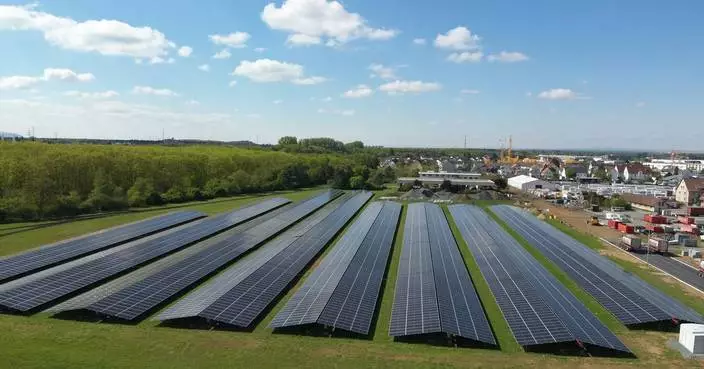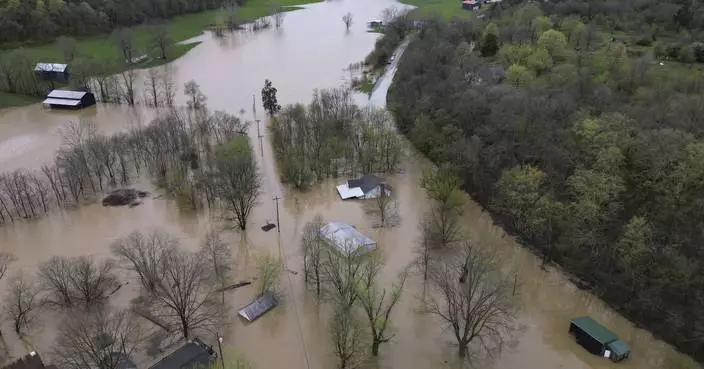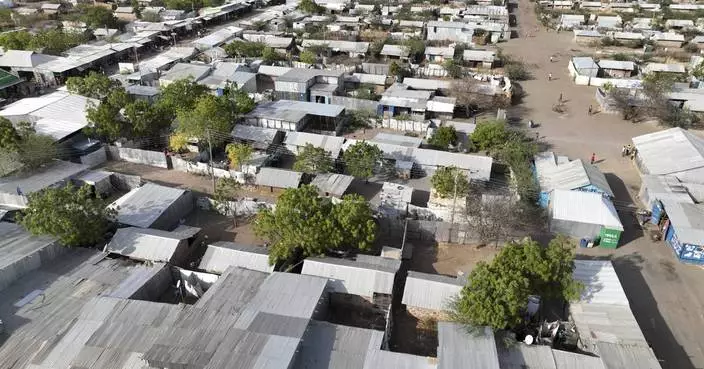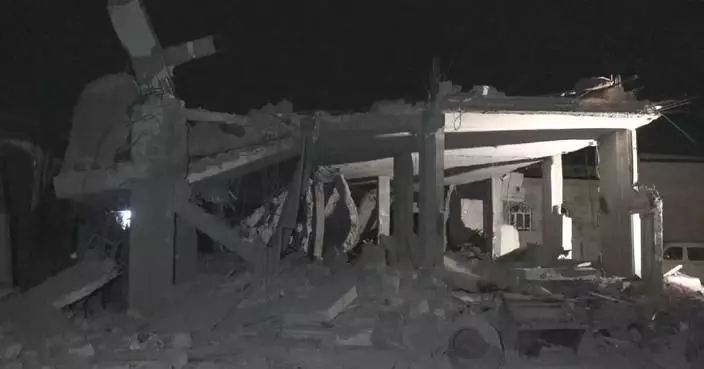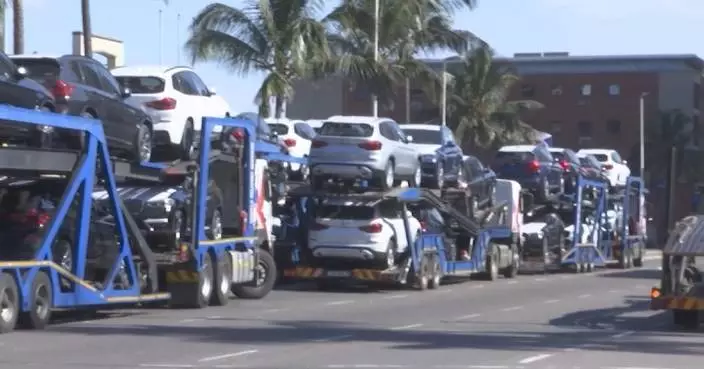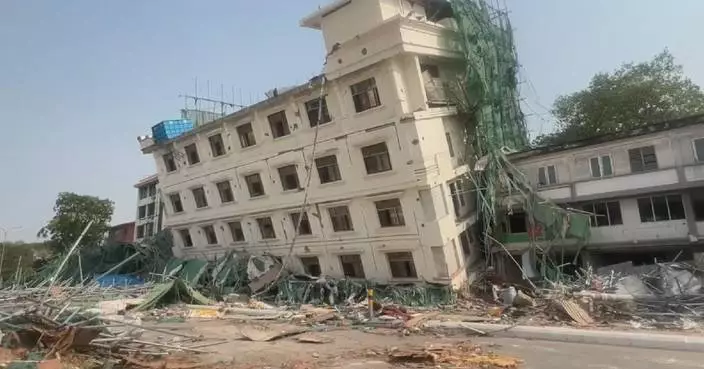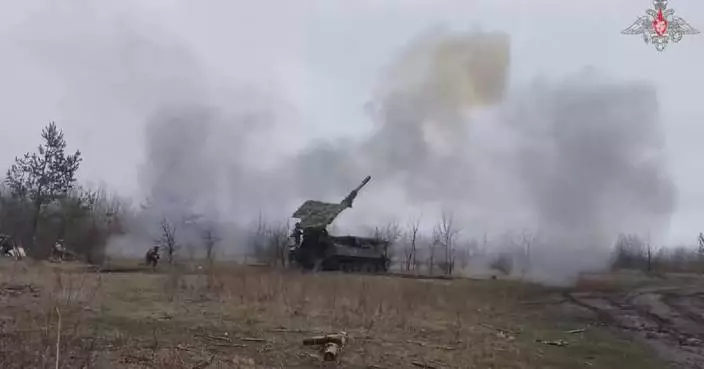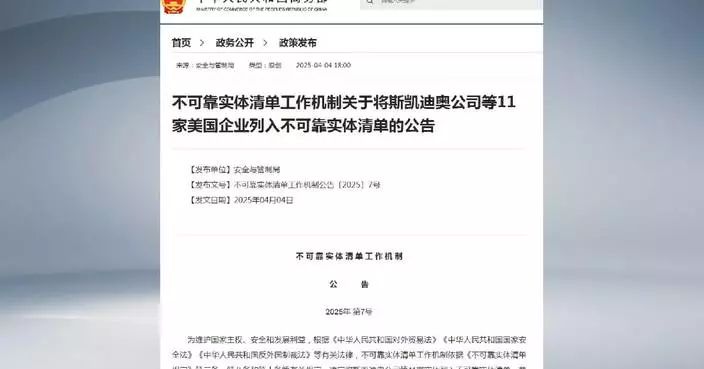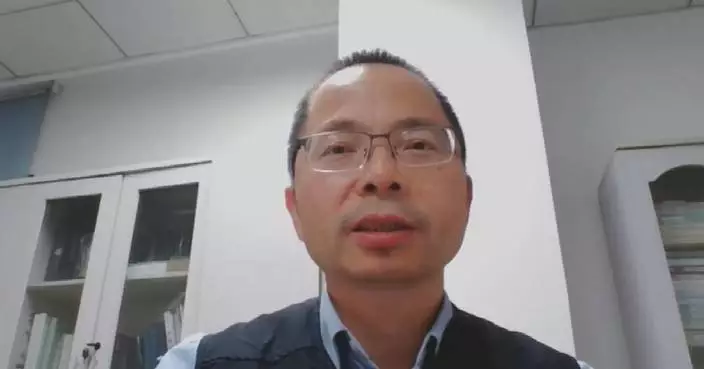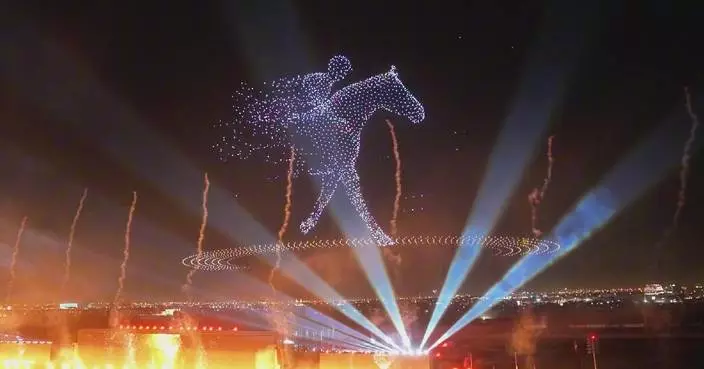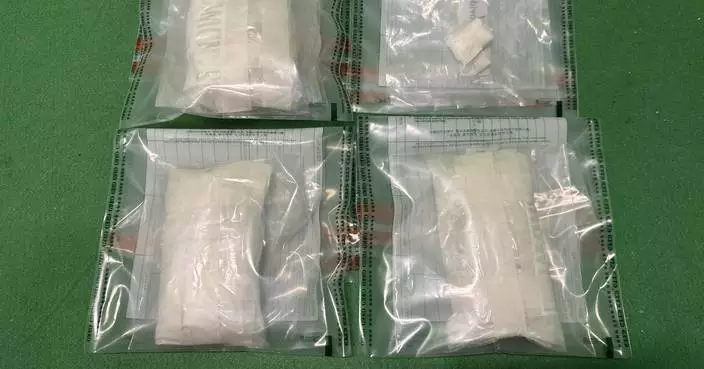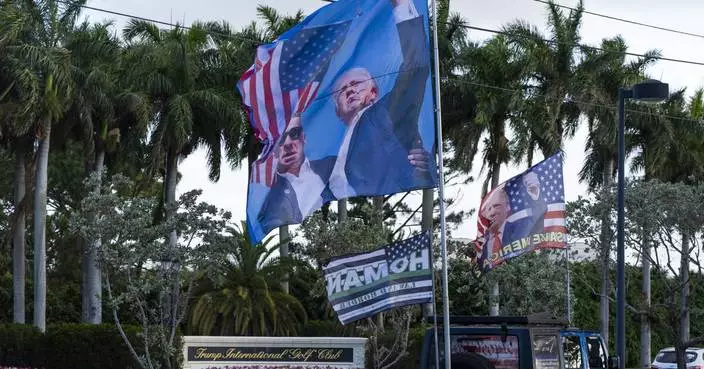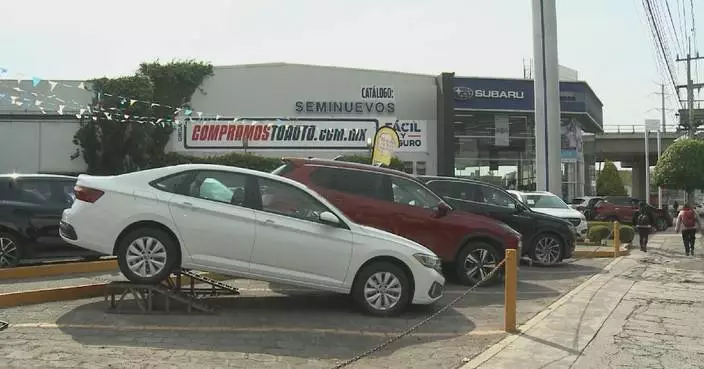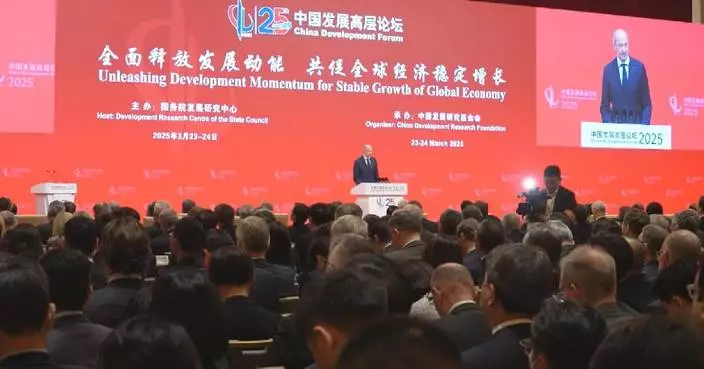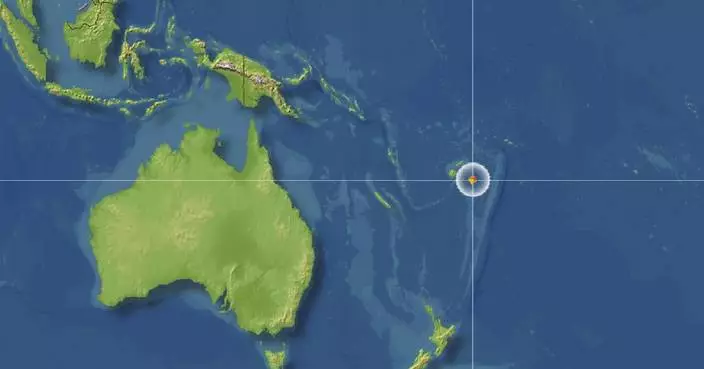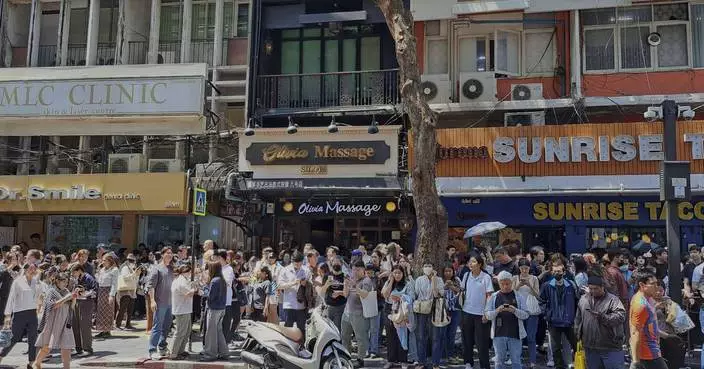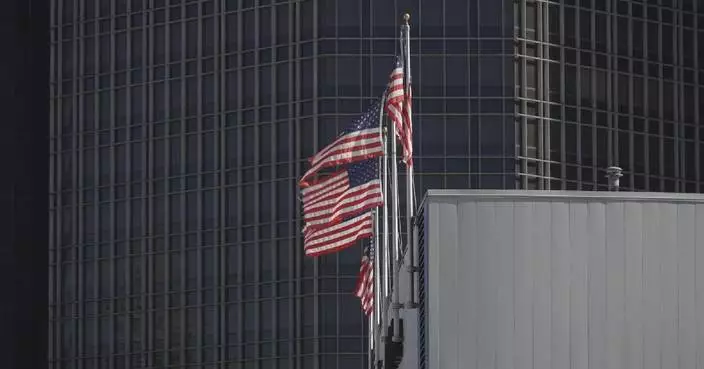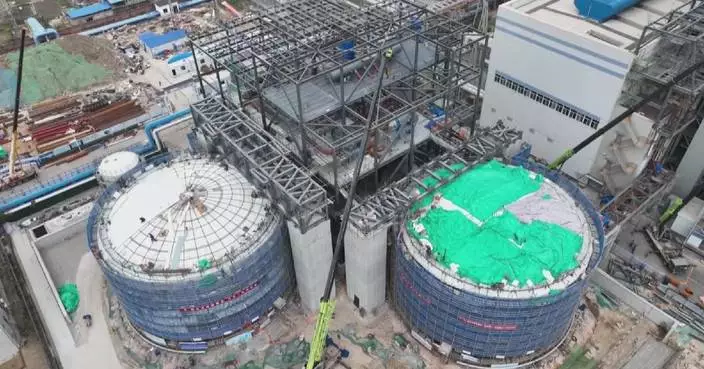DETROIT (AP) — President Donald Trump's tariff blitz has sent shock waves throughout every aspect of the global economy, including the auto sector, where multi-billion-dollar plans to electrify in the United States are especially at risk.
Here's what consumers should know about the impact of tariffs on electric vehicles.
EVs accounted for about 8% of new car sales in the U.S. in 2024, according to Motorintelligence.com.
Some of those sales can be attributed to expanded tax credits for EV purchases, a Biden-era policy that spurred car buyer interest.
Tesla held a majority of U.S. EV market share in 2024, at 48%. But that share has declined in recent years, as brands including Ford (7.5%), Chevrolet (5.2%) and Hyundai (4.7%) began to offer a wider variety of electric models at better price points, according to Kelley Blue Book.
Electric vehicles remain more expensive than their gasoline-powered equivalents. New gas vehicles sold for $48,039 on average last month, Kelly Blue Book data says, while EVs sold for $55,273 on average.
Tariffs add on to the costs of an EV transition that was already volatile and uncertain, said Vanessa Miller, a litigation partner focused on automotive manufacturing at law firm Foley & Lardner.
Biden’s tax credits essentially required automakers to get more and more of their EV content from the U.S. or trade allies over the coming years in order for their vehicles to qualify. Automakers have worked to build an EV supply chain across the country and significant investment has gone toward these efforts.
EVs assembled here include Tesla models, the Ford F-150 Lightning and more. Tesla actually might be least vulnerable given how much of its vehicles come from the U.S.
Though the industry is growing, tariffs mean costs for automakers and their buyers will stay high and might go higher, as well as hike up the prices of the many parts of EVs still coming from China and elsewhere. From the critical minerals used in battery production to the vehicles themselves, China laps the U.S. industry.
Automakers were already pulling back on ambitious electrification plans amid shrinking federal support and are strapped for cash on what is the less lucrative side of their businesses.
Higher prices might push car buyers to the used car market, but they aren't likely to find much respite there.
If consumers don't buy as many vehicles, automakers will have to prioritize their investments and manufacturing. That means the cars that buyers want and that are most profitable. Automakers still lose thousands of dollars on each EV they make and sell, but they make money from big, popular gas-guzzling pickup trucks and SUVs.
These manufacturers “have put a certain amount of investment into EVs, and it would probably be even more wasteful to completely walk away from them than it is to find the new level at which it makes sense to maintain production of them," said Karl Brauer, executive analyst at auto research site iSeeCars.com. That level “will assuredly be lower than what it was,” he added.
Making fewer EVs won’t help bring their cost down further anytime soon.
Albert Gore, executive director of the Zero Emission Transportation Association, said in a statement the EV and battery sector is working to ensure that the American auto industry grows and that his group will work with the administration on productive trade policy.
“Tariffs on our longstanding trade partners, many of whom have committed billions in direct investment into U.S. factories, introduces uncertainty and risk into an industry that is creating jobs and bringing new economic opportunities to communities across the country,” Gore said.
Trump has already taken a hatchet to federal EV policy. He campaigned on a vow to end what he called former President Joe Biden’s “EV mandate.”
Biden’s EV policies did not require automakers to sell EVs or consumers to buy them, but they did incentivize manufacturers to increase their electric offerings in the coming years. Trump put an end to Biden’s target for 50% of all new vehicles sold in the U.S. to be electric by 2035 in his first days in office.
Also under Biden, Environmental Protection Agency and National Highway Traffic Safety Administration rules on vehicle greenhouse gas emissions and fuel economy were to get increasingly tougher, but could be met by automakers selling a growing number of EVs alongside more fuel-efficient gasoline-powered vehicles. Trump's administrators are already reevaluating emissions standards.
He's also likely to seek to repeal the tax credits.
Alexa St. John is an Associated Press climate reporter. Follow her on X: @alexa_stjohn. Reach her at ast.john@ap.org.
The Associated Press’ climate and environmental coverage receives financial support from multiple private foundations. AP is solely responsible for all content. Find AP’s standards for working with philanthropies, a list of supporters and funded coverage areas at AP.org.
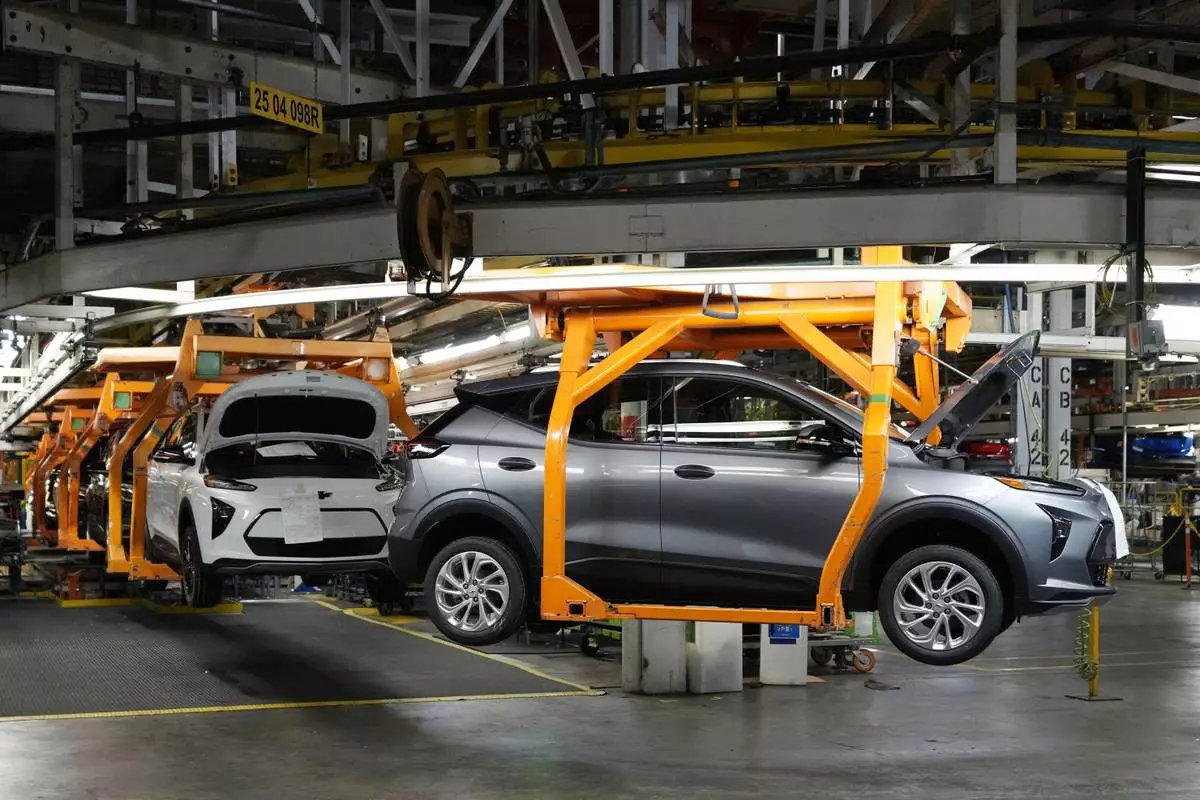
File - Vehicles move along the 2023 Chevrolet Bolt EV and EUV assembly line at the General Motors Orion Assembly on June 15, 2023, in Lake Orion, Mich. (AP Photo/Carlos Osorio, File)
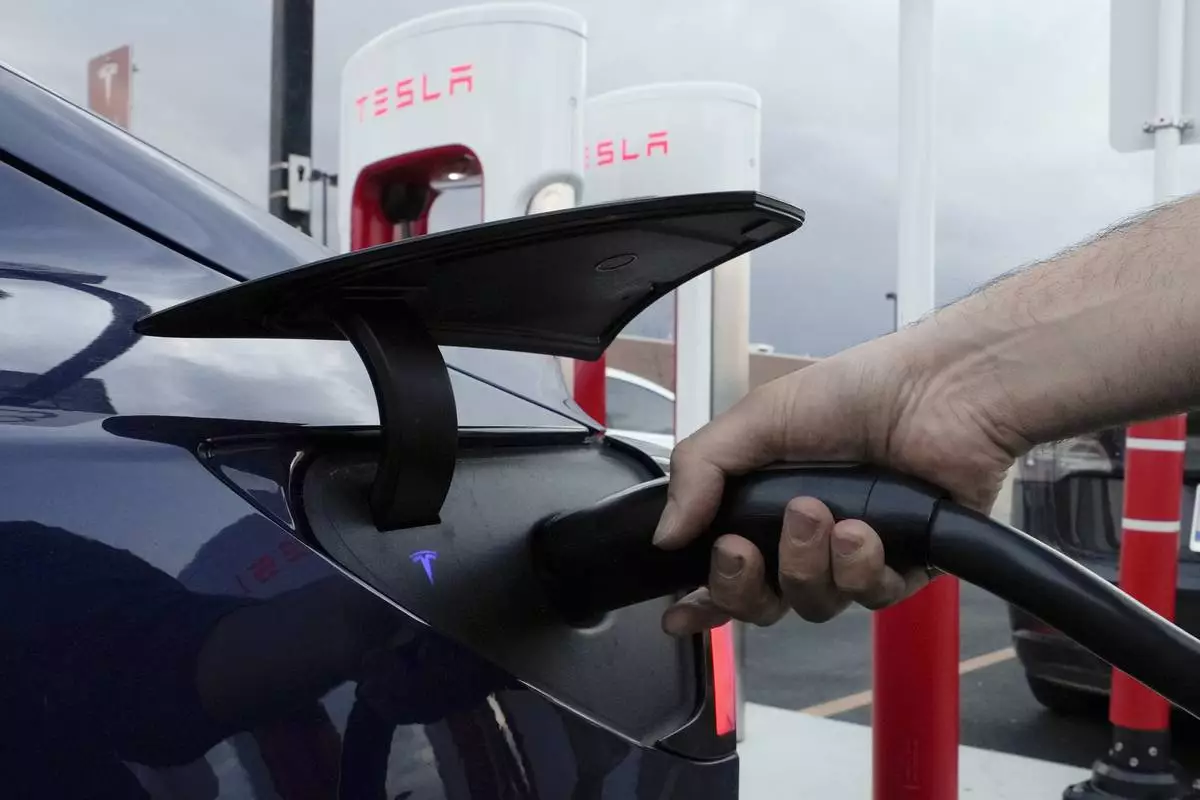
FILE - A motorist charges his electric vehicle at a Tesla Supercharger station in Detroit, Nov. 16, 2022. (AP Photo/Paul Sancya, File)
TEL AVIV, Israel (AP) — Israel has dramatically expanded its footprint in the Gaza Strip since relaunching its war against Hamas last month. It now controls more than 50% of the territory and is squeezing Palestinians into shrinking wedges of land.
The largest contiguous area the army controls is around the Gaza border, where the military has razed Palestinian homes, farmland and infrastructure to the point of uninhabitability, according to Israeli soldiers and rights groups. This military buffer zone has doubled in size in recent weeks.
Israel has depicted its tightening grip as a temporary necessity to pressure Hamas into releasing the remaining hostages taken during the Oct. 7, 2023, attack that started the war. But the land Israel holds, which includes a corridor that divides the territory's north from south, could be used for wielding long-term control, human rights groups and Gaza experts say.
Prime Minister Benjamin Netanyahu said last week that even after Hamas is defeated, Israel will keep security control in Gaza and push Palestinians to leave.
The demolition close to the Israeli border and the systematic expansion of the buffer zone has been going on since the war began 18 months ago, five Israeli soldiers told The Associated Press.
“They destroyed everything they could, they shot everything that looks functioning ... (the Palestinians) will have nothing to come back, they will not come back, never,” a soldier deployed with a tank squad guarding the demolition teams said. He and four other soldiers spoke to the AP on condition of anonymity for fear of reprisals.
A report documenting the accounts of soldiers who were in the buffer zone was released Monday by Breaking The Silence, an anti-occupation veterans group. A handful of soldiers -- including some who also spoke to AP -- described watching the army turn the zone into a vast wasteland.
“Through widespread, deliberate destruction, the military laid the groundwork for future Israeli control of the area,” said the group.
Asked about the soldiers’ accounts, the Israeli army said it is acting to protect its country and especially to improve security in southern communities devastated by the Oct. 7 attack, in which some 1,200 people were killed and 251 taken hostage. The army said it does not seek to harm civilians in Gaza, and that it abides by international law.
In the early days of the war, Israeli troops forced Palestinians from communities near the border and destroyed the land to create a buffer zone more than a kilometer (0.62 miles) deep, according to Breaking The Silence.
Its troops also seized a swath of land across Gaza known as the Netzarim Corridor that isolated the north, including Gaza City, from the rest of the narrow, coastal strip, home to more than 2 million people.
When Israel resumed the war last month, it doubled the size of the buffer zone, pushing it as far as 3 kilometers (1.8 miles) into Gaza in some places, according to a map issued by the military.
The buffer zone and the Netzarim Corridor make up at least 50% of the strip, said Yaakov Garb, a professor of environmental studies at Ben Gurion University, who has been examining Israeli-Palestinian land use patterns for decades.
Last week, Netanyahu said Israel intends to create another corridor that slices across southern Gaza, cutting off the city of Rafah from the rest of the territory. Israel’s control of Gaza is even greater taking into account areas where it recently ordered civilians to evacuate ahead of planned attacks.
Hundreds of thousands of Palestinians used to live in the land that now makes up Israel's buffer zone, an area that was key to Gaza's agricultural output.
Satellite images show once dense neighborhoods turned to rubble, as well as nearly a dozen new Israeli army outposts since the ceasefire ended.
When the ceasefire was announced in January, Nidal Alzaanin went back to his home in Beit Hanoun in northern Gaza. His property stood on the edge of the buffer zone and lay in ruins.
All that remains is a photo of him and his wife on their wedding day, a drawing of his son’s face on a porcelain plate and the carcass of a 150-year-old sycamore tree planted by his great-grandfather. His greenhouse was reduced to twisted scraps of metal.
The 55-year-old farmer pitched a tent in the rubble, hoping to rebuild his life. But when Israel resumed its campaign and seized his land, he was again uprooted.
“It took 20 years to build a house and within five minutes they destroyed all my dreams and my children’s dreams,” he said from Gaza City, where he now shelters.
Israel’s bombardment and ground offensives throughout the war have left vast swaths of Gaza’s cities and towns destroyed. But the razing of property inside the buffer zone has been more methodical and extensive, soldiers said.
The five soldiers who spoke to the AP said Israeli troops were ordered to destroy farmland, irrigation pipes, crops and trees as well as thousands of buildings, including residential and public structures, so that militants had nowhere to hide.
Several soldiers said their units demolished more buildings than they could count, including large industrial complexes. A soda factory was leveled, leaving shards of glass and solar panels strewn on the ground.
The soldiers said the buffer zone had no marked boundaries, but that Palestinians who entered were shot at.
The soldier with the tank squad said an armored bulldozer flattened land creating a “kill zone” and that anyone who came within 500 meters of the tanks would be shot, including women and children.
Visibly shaken, he said many of the soldiers acted out of vengeance for the Oct. 7 attack.
“I came there because they kill us and now we’re going to kill them. And I found out that we’re not only killing them. We’re killing them, we’re killing their wives, their children, their cats, their dogs, and we destroyed their houses,” he said.
The army said its attacks are based on intelligence and that it avoids “as much as possible, harm to non-combatants.”
It is unclear how long Israel intends to hold the buffer zone and other territory inside Gaza.
In announcing the new corridor across southern Gaza, Netanyahu said Israel aims to pressure Hamas to release the remaining 59 hostages, of whom 35 are believed dead. He also said the war can only end when Hamas is destroyed and its leaders leave Gaza, at which point Israel would take control of security in the territory.
Then, Netanyahu said, Israel would implement U.S. President Donald Trump’s call to move Palestinians from Gaza, what Israel calls “voluntary emigration.”
Some Israel analysts say the purpose of the buffer zone isn’t to occupy Gaza, but to secure it until Hamas is dismantled. “This is something that any sane country will do with regard to its borders when the state borders a hostile entity,” said Kobi Michael, a senior researcher at two Israeli think tanks, the Institute for National Security Studies and the Misgav Institute.
But rights group say forcibly displacing people is a potential war crime and crime against humanity. Within Gaza’s buffer zones, specifically, it amounts to “ethnic cleansing,” because it was clear people would never be allowed to return, said Nadia Hardman, a researcher at Human Rights Watch.
Israel called the accusations baseless and said it evacuates civilians from combat areas to protect them.
Associated Press reporter Michael Biesecker contributed from Washington.
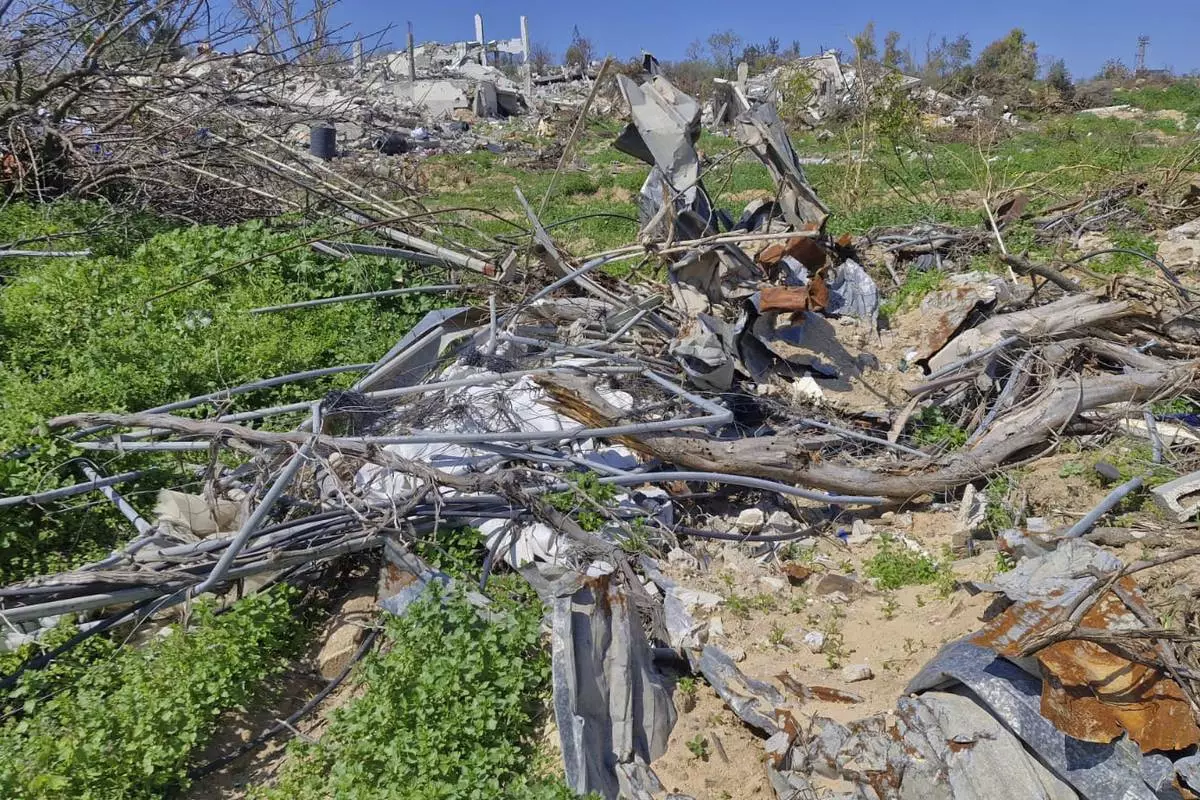
This photo provided by Palestinian Nidal Alzaanin, shows his destroyed greenhouse in Beit Hanoun, Gaza Strip, March, 2025. (AP Photo/Nidal Alzaanin)
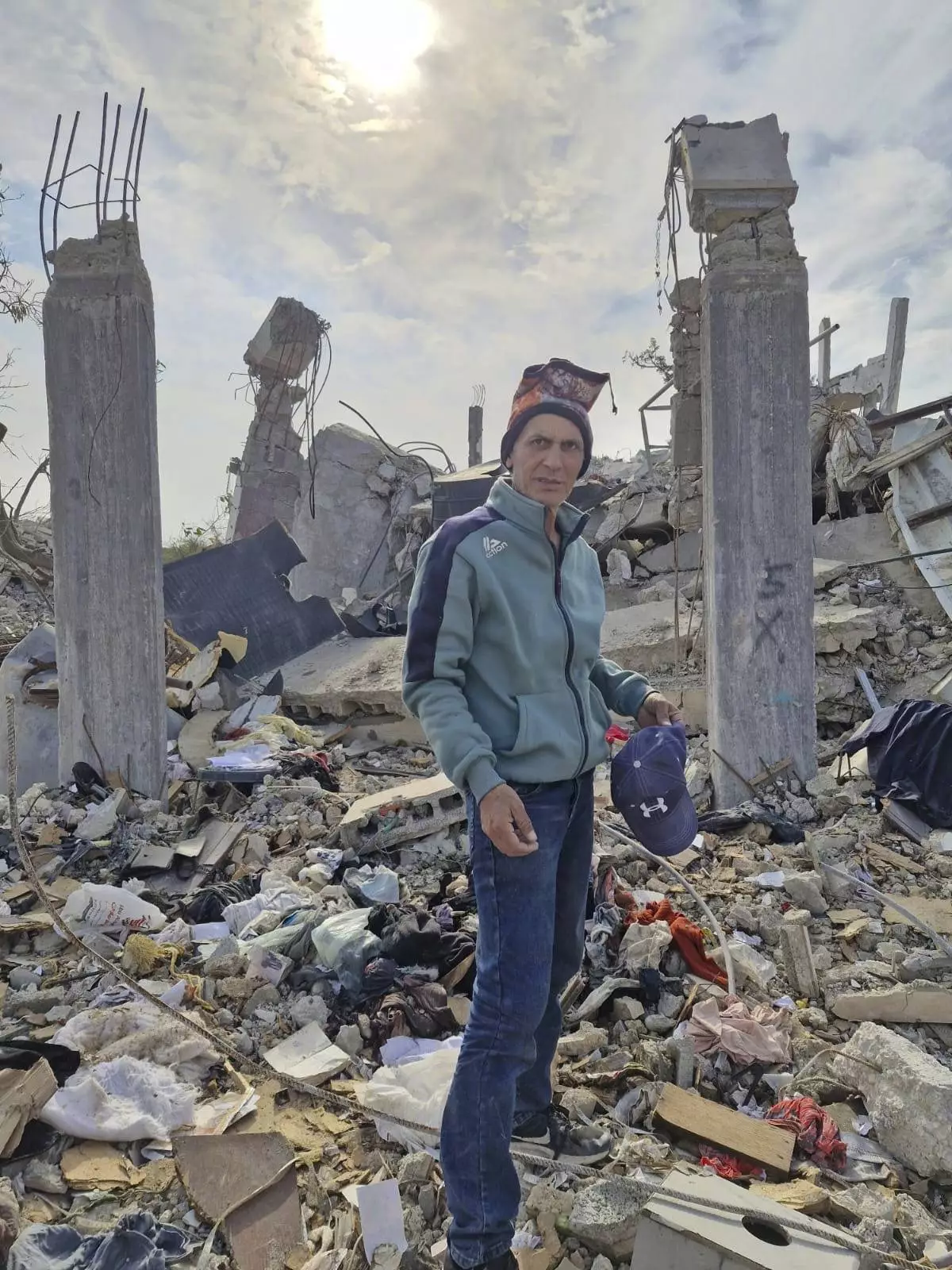
This photo provided by Palestinian Nidal Alzaanin, shows him standing in front of his demolished home in Beit Hanoun, Gaza Strip, March, 2025. (AP Photo)
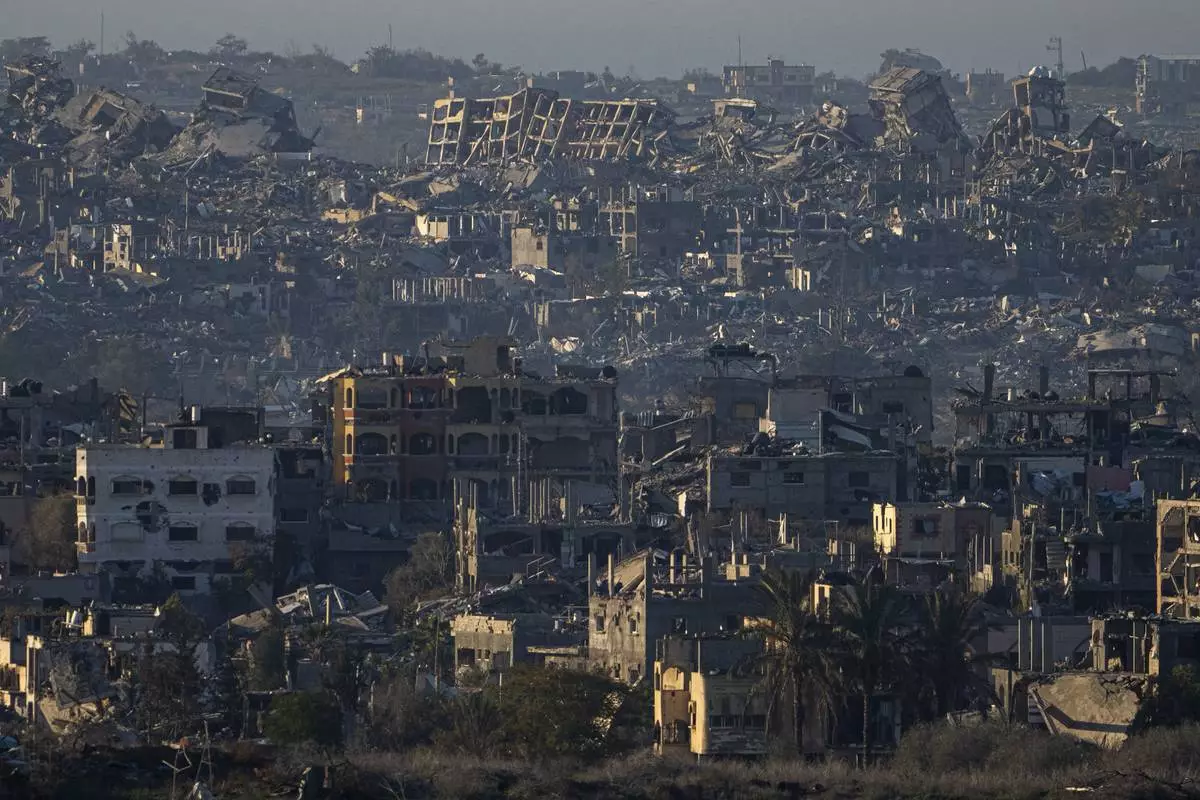
FILE - Destroyed buildings are seen inside the Gaza Strip from southern Israel, Jan. 13, 2025. (AP Photo/Ariel Schalit, File)
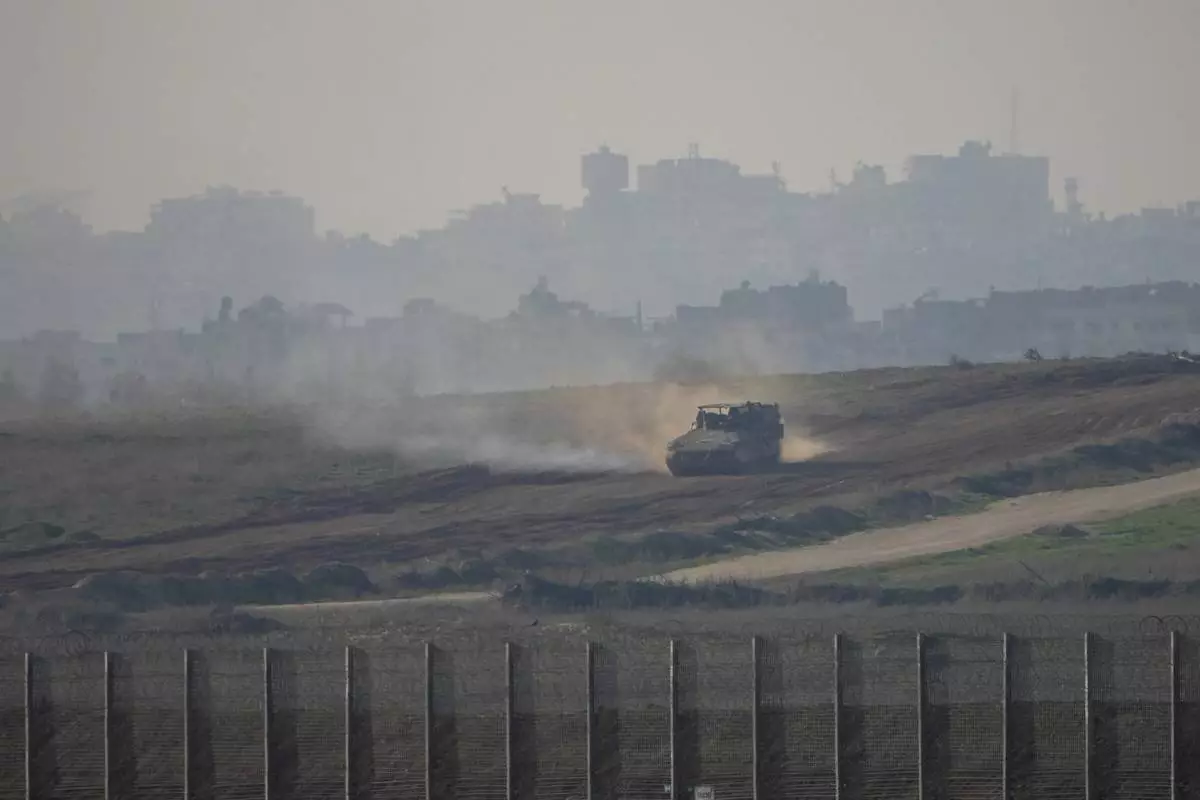
FILE - An Israeli army vehicle moves in the Gaza Strip as seen from southern Israel, Jan. 16, 2025. (AP Photo/Ariel Schalit, File)
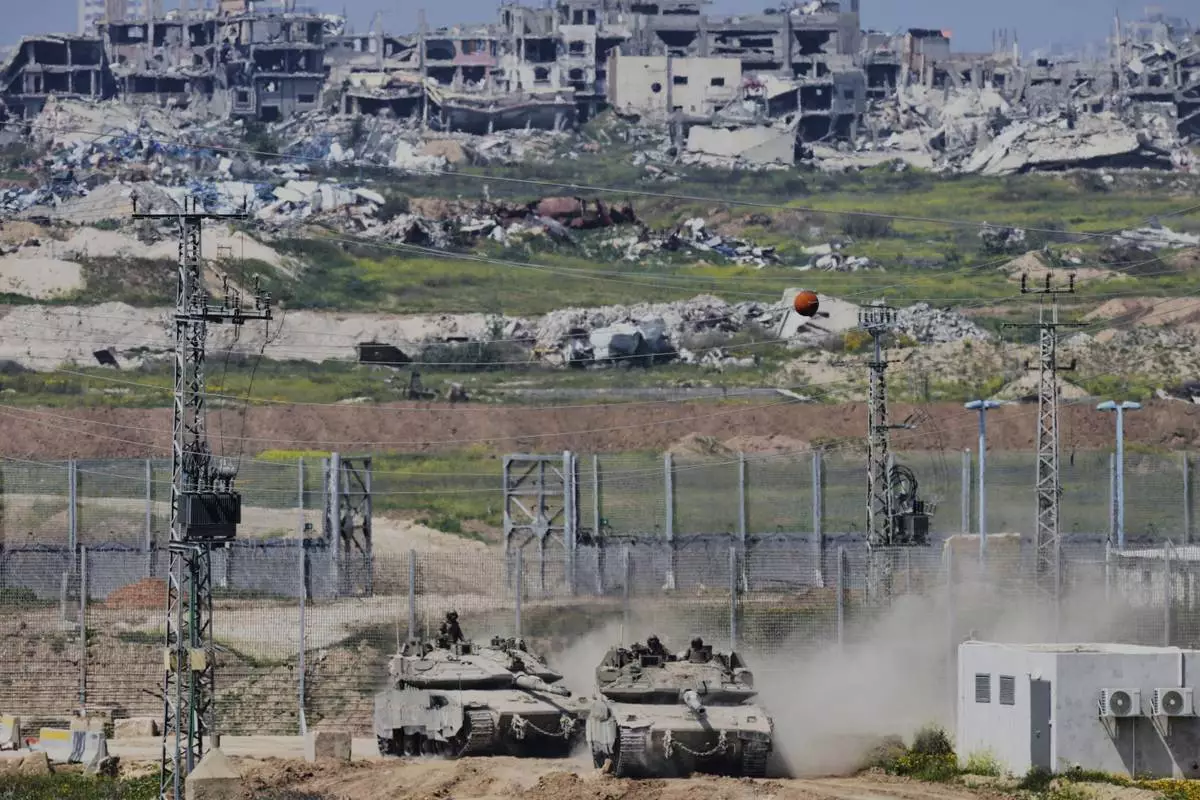
FILE - Israeli tanks maneuver along the border with north of the Gaza Strip, as seen from southern Israel, March 18, 2025. (AP Photo/Ohad Zwigenberg, File)
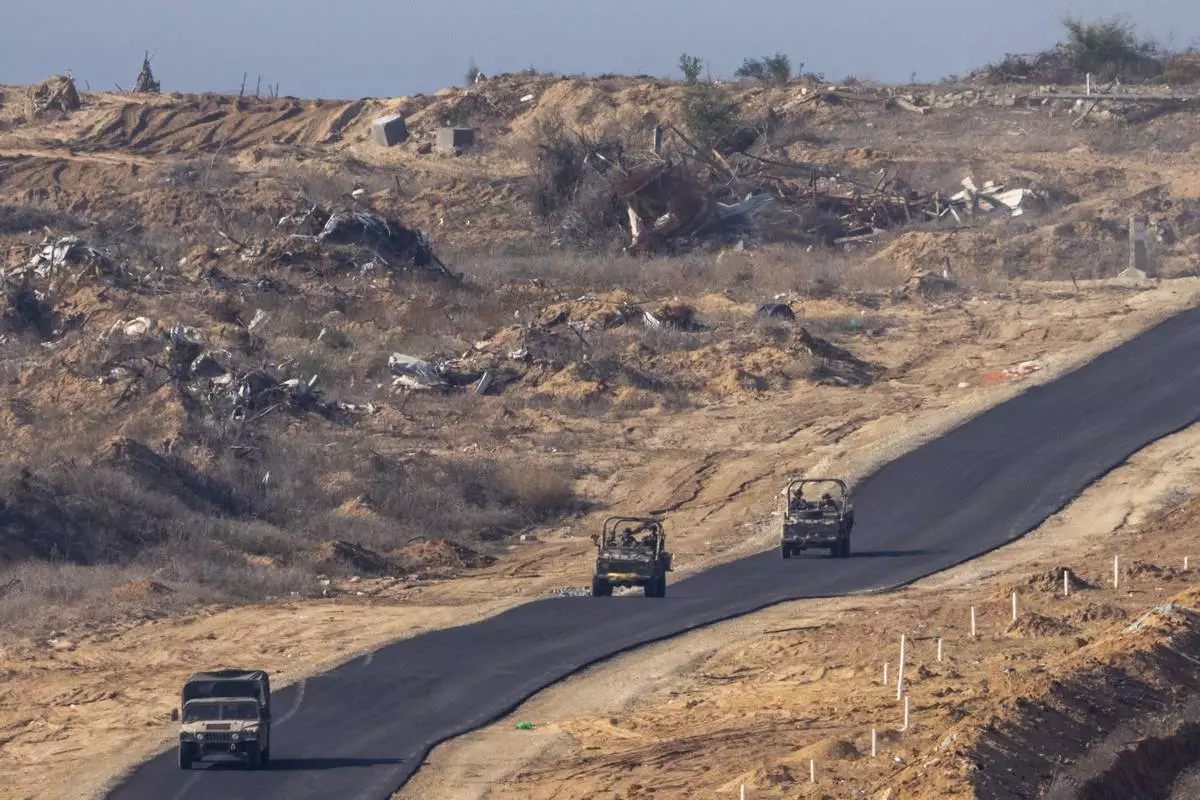
FILE - Israeli military vehicles move inside the Gaza Strip, as seen from southern Israel, Tuesday, Jan. 7, 2025. (AP Photo/Ariel Schalit, File)











